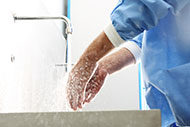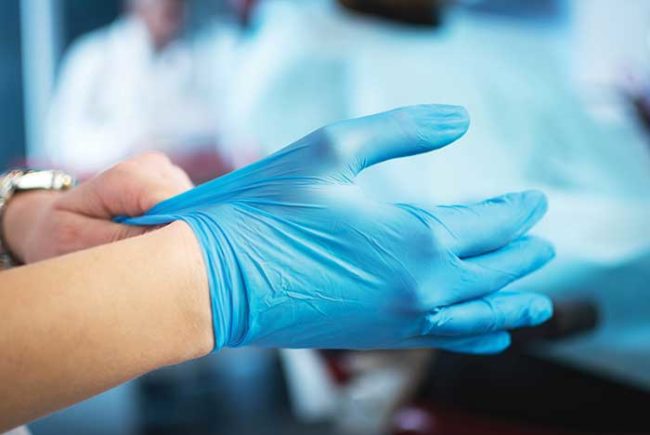As part of an ongoing quality and safety improvement effort, the Ohio Hospital Association (OHA) recently was recognized for its effort to improve hand-hygiene compliance and subsequently reduce health care-associated infections.
A key part of the program involves specially trained student nurses who have made more than 410,000 hand-hygiene observations at more than 100 participating Ohio hospitals and nursing facilities since the initiative began in 2010 as a regional effort with 20 facilities.
As a result of the direct observation, hand-hygiene compliance by staff doubled in five years, contributing to a 48 percent decrease in health care-associated infections in 2014 compared with that of the prior year.
Data for these real-time observations are entered electronically through a mobile device application developed by the OHA for the initiative.
Data are quickly aggregated, allowing hospitals to compare their compliance with other participating facilities and providing same-day feedback for internal use. The mobile app has been updated to an online portal available to all hospital staff.
“Our hand-hygiene compliance rate is now 84 percent, compared with a 68 percent national compliance rate,” says Mike Abrams, OHA president and CEO. “We are definitely making the kind of progress we need to, and we are using the good results to further expand the program and inspire even more hospitals to participate.”
The OHA’s hand-hygiene program received an honorable mention award in connection with the American Hospital Association's (AHA's) 2016 Dick Davidson Quality Milestone Award.
Due to its success, OHA continues to recruit more hospitals to participate, says Ellen Hughes, R.N., coordinator of quality integration, OHA.
Use of the mobile devices for collecting data is important so that managers are informed immediately about noncompliance, says Rosalie Weakland, R.N., OHA's senior director of quality programs. Managers can quickly address any issues with the group or individuals who report to them.
Weakland says that the hand-hygiene initiative originally began as a temporary part of a broader-based quality improvement program by OHA, but continues because it is so effective.
“We have found that the hospitals that have continued monitoring continue to have high rates of hand-hygiene compliance and low rates of infections,” she says. “Those who stopped monitoring have seen a bit of creep upward in the rate of infections.”
The AHA presents the Dick Davidson Quality Milestone Award annually to a state, regional or metropolitan hospital association that demonstrates exceptional organizational leadership and innovation in quality improvement and has made significant contributions to the measurable improvement of quality within its geographic area.





